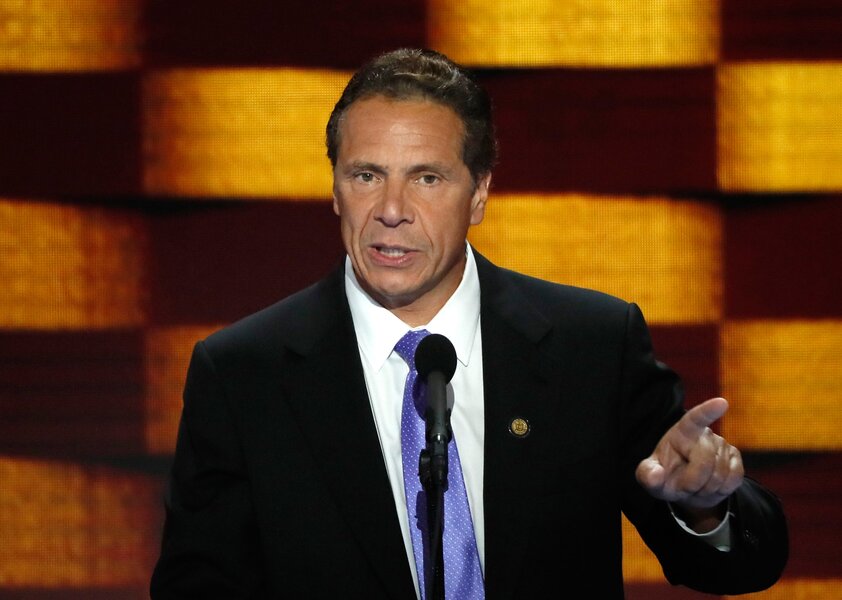How Democrats could rebound after 2016
Loading...
This year didn’t exactly go according to plan for the Democrats.
And at first glance, 2018 might look gloomy as well. Democrats will mainly play a defensive game in congressional midterms with very few Republican Senate seats up for grabs and most House seats are safe for one party or the other.
But if Democrats focus on state-level races in the next two years, they can win big.
“Democrats have to rebuild their bench,” says Larry Sabato, director of University of Virginia’s Center for Politics, “and it is best done from the states: with governors and state legislators.”
Thirty-eight governorships are up for election in the next two years, providing fertile ground for new Democratic faces and ideas to emerge. In 16 states – including the swing states of Ohio, Florida, Nevada, and Michigan – Republican governors will step down due to term limits or retirement, leaving open-seat races. New Mexico, Maine, and New Jersey – all blue states with Republican governors – will be electing new chief executives in the next two years.
Winning a slew of governorships could bring a new generation of party leaders into the spotlight and help rebrand the Democratic Party. Governors can operate autonomously from Washington, and pursue new policy ideas that bolster a party image of innovation.
“In governors, people see a leader. They can pursue fresh policies that spread quickly around the country,” says Jared Leopold, communications director for the Democratic Governors Association (DGA). “There is a lot of opportunity to be on the offense here [in 2018]…. Governors quickly become the stars of their party.”
Many of America's recent presidents, from Jimmy Carter to George W. Bush, served first as governors.
How Republicans rebounded from 2008
After the 2008 election, Republicans found themselves in the same position that Democrats now face. Barack Obama had won the presidency, and Democrats controlled both chambers of Congress.
But within the next two years conservatives came back to take 11 governorships out of Democratic hands. And this year, Republicans won the presidency as well as majorities in the House and Senate.
“Republicans rebuilt after 2008 by electing new governors who pushed policies and had a story to tell,” Mr. Leopold. “Governorships are the best way to quickly rebuild and inject fresh blood.”
Republican governors elected to their first term in 2010 made a name for themselves in the conservative field. Ohio Gov. John Kasich took his state from a $6 billion deficit to a $2 billion surplus. New Jersey Gov. Chris Christie reached an approval rating of 77 percent after helping his state through superstorm Sandy, before his reputation was tainted by the Bridgegate scandal. Wisconsin Gov. Scott Walker cut his state’s unemployment rate by almost half – though that largely mirrored national trends.
Governorships are the perfect means to audition a new party message, says Connecticut Gov. Dannel Malloy, who chairs the DGA. This could be especially helpful in the Midwest, where many Democrats worry the Republican Party has found a new stronghold with the white working class.
“Gubernatorial campaigns by their very nature take that one on,” Governor Malloy told Politico. “If you’re running for governor, you are going to get known and visit every community. It’s very personal ownership and people want to know you. That doesn’t mean there won’t be close elections, but it’s different.”
Governors Kasich, Christie, and Walker’s successes also served the conservative cause in a more obvious way: They added to the party’s list of credible presidential candidates in 2016.
“The Democratic Party needs some stars,” says John Weingart, director of Rutgers University’s Center on the American Governor in New Jersey, “some younger faces to advance their issues and to be potential national candidates in 2020 and beyond.”
Democrats' bench has few rising stars
During Mr. Obama’s tenure, Democrats have not only lost 12 governorships, dropping from 28 in January 2009 to 16 in January 2017; they have also lost more than 950 state legislative seats to Republicans since Obama took office, the largest net loss for either party since World War II.
“Obama paid no attention to party development as president and the results have been disastrous,” says William Crotty, an emeritus professor of political science at Northeastern University in Boston. “His record in this regard is terrible.”
The number of Democratic governors and state legislators over the next few years may be more important than ever. When the next census is held in 2020, state legislatures – and to some extent governors – will lead the subsequent redrawing of congressional districts. Success for Democrats at the state level is “essential,” adds Mr. Weingart.
But for Democrats to reap the rewards of state-level wins at the national level, party donors and voters need to invest in the 2018 midterm elections.
“The trouble is that very few people find state politics compelling, and I’ll admit I’m no exception," writes The Week’s Paul Waldman. "It can be hard to care about what happens at the minor league ballpark when the World Series is going on.... But it’s necessary.”








